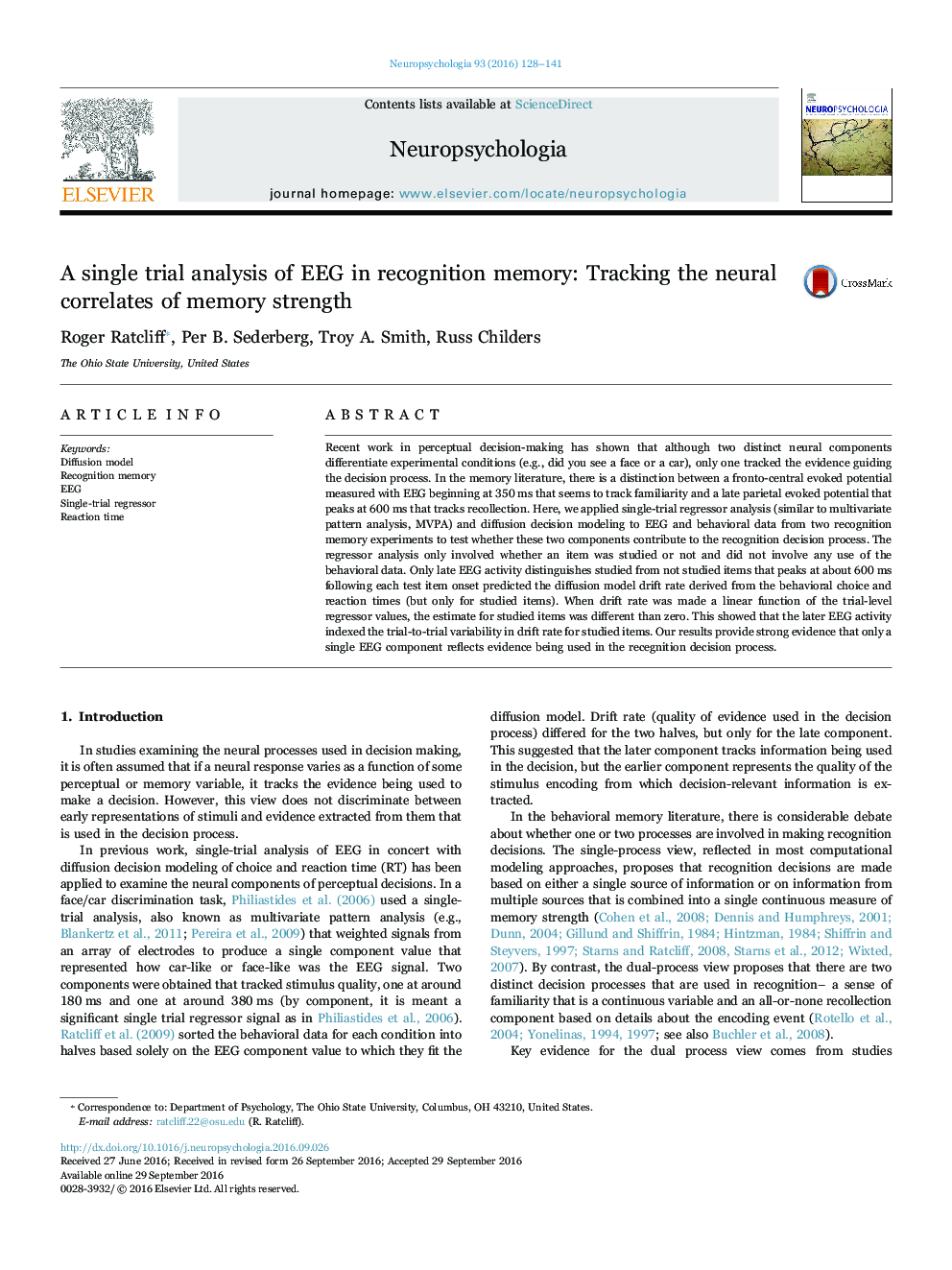| کد مقاله | کد نشریه | سال انتشار | مقاله انگلیسی | نسخه تمام متن |
|---|---|---|---|---|
| 5045321 | 1370661 | 2016 | 14 صفحه PDF | دانلود رایگان |

- A single trial regressor analysis was conducted on EEG data from recognition memory.
- The EEG regressor was trained by whether the test item was studied or not.
- A diffusion decision model with drift rate a function of the regressor fit the data.
- A regressor trained at 600Â ms (but not one at 375Â ms) indexed evidence accumulation rate.
- An EEG difference does not guarantee that it reflects evidence used in the decision.
Recent work in perceptual decision-making has shown that although two distinct neural components differentiate experimental conditions (e.g., did you see a face or a car), only one tracked the evidence guiding the decision process. In the memory literature, there is a distinction between a fronto-central evoked potential measured with EEG beginning at 350Â ms that seems to track familiarity and a late parietal evoked potential that peaks at 600Â ms that tracks recollection. Here, we applied single-trial regressor analysis (similar to multivariate pattern analysis, MVPA) and diffusion decision modeling to EEG and behavioral data from two recognition memory experiments to test whether these two components contribute to the recognition decision process. The regressor analysis only involved whether an item was studied or not and did not involve any use of the behavioral data. Only late EEG activity distinguishes studied from not studied items that peaks at about 600Â ms following each test item onset predicted the diffusion model drift rate derived from the behavioral choice and reaction times (but only for studied items). When drift rate was made a linear function of the trial-level regressor values, the estimate for studied items was different than zero. This showed that the later EEG activity indexed the trial-to-trial variability in drift rate for studied items. Our results provide strong evidence that only a single EEG component reflects evidence being used in the recegnition decision process.
Journal: Neuropsychologia - Volume 93, Part A, December 2016, Pages 128-141